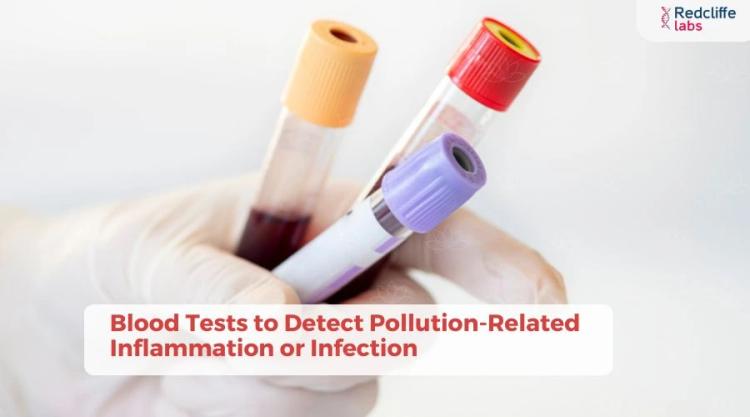H3N2 Symptoms: Diagnosis, Treatment and Prevention Tips

Medically Reviewed By
Dr Divya Rohra
Written By Kirti Saxena
on Apr 18, 2024
Last Edit Made By Kirti Saxena
on Jul 19, 2025

A change in weather and climate brings countless diseases. Cold, cough, flu, and fever are some common ones. H3N2 is one flu, known as the influenza virus, with common symptoms like other flu.
In recent years, we have seen the outbreak of the H3N2 virus because it can spread in the atmosphere quickly. Influenza is highly contagious and can spread through cough and sneezing. It can easily mutate and evolve in the environment and cause several deaths each year. The symptoms are similar to other fluids, like cough, tiredness, sore throat, body aches, and fever. But if you ignore the symptoms, it can cause complications such as pneumonia, and bronchitis, and even you can loose your life. However, diagnosing it early and taking preventive measures can facilitate its treatment. People can recover within a week in most cases.
In this blog, we will learn about H3N2 flu symptoms, how to recognize the signs, tests to diagnose, and prevention tips.
What do you need to know about H3N2?
Every year, India witnesses the two peak seasonal influenza- January to March and post-monsoon season. According to the integrated health information platform, 3,038 cases of influenza subtypes, including H3N2, were found until March 2023.
Low vaccination rates and high pollution are reasons why it spreads drastically. Researchers state that H3N2 is a severe infection that can cause serious health impacts on people aged over 65 and children under 5. Therefore, it is important to understand the causes of symptoms and consult with your healthcare provider if you notice H3N2 symptoms to get treated and combat this viral infection.
How does the H3N2 influenza Transmit?
The virus is similar to other flues and can be transmitted easily in the environment through sneezing and coughing. Here are some factors that are responsible for transmitting the influenza;
- Direct Contact: One of the most common ways to catch H3N2 is by being close to someone with the virus. It can easily be transmitted through tiny droplets while talking, sneezing, and coughing.
- Touching Contaminated surfaces: The virus can easily survive on surfaces like doorknobs and shared objects. Try to avoid touching surfaces unnecessarily.
- Airborne Transmission: H3N2 can transmit through airborne particles in closed spaces on crowded and poorly ventilated surfaces.
What are common H3N2 influenza virus symptoms?
Not everyone has the same symptoms; some people may experience severe or light symptoms, as they may differ from person to person. Here are some common symptoms:
- High fever.
- Cough
- Body aches
- Fatigue
- Sore throat
- Runny or stuffy nose
- Frequent Headaches
- Chills
- Sneezing
- Shortness of breath
Risk factors and complications of H3N2 Influenza
The virus can spread quickly in the air, so everyone is at risk. But certain people are at high risk and must take extra precautions for prevention, including:
- Older people aged above 65 years
- Children under five years of age
- Obese people.
- People with weak immune system
- People with chronic medical issues like asthma, diabetes, heart disease, or lung disease.
- Pregnant women
Health Complications of H3N2 Influenza
H3N2 influenza can cause severe health issues if not treated on time. Here are some of them:
- Pneumonia
- Bronchitis
- Sinus infections
- Ear infections
- Neurological issues like encephalitis or febrile seizures
Don't avoid the gentle or minor risk of flu-like symptoms as, in the long term, it causes serious harm to your health. Always consult with your doctor and take the Influenza H3N2 Test from Redcliffe Labs.
How is H3N2 influenza diagnosed?
H3N2 can be diagnosed with Influenza H3N2 Test. If you are experiencing flu-like symptoms, then consult with your doctor. Based on your symptoms, like a high fever, severe cough, body pain, and other signs of the flu, your healthcare provider may recommend the H3N2 test.
H3N2 is a swab test. The phlebotomist will take the sample from your nose or throat. After the test, consult your doctor about your reports. Your healthcare provider may use some antiviral medications if the test reports are positive. Take the medicines as prescribed to reduce the severity and to get well soon.
Tips to prevent H3N2 Influenza
Follow the steps to prevent the transmission of H3n2 infection.
- Always cover your nose and mouth with tissue or a mask.
- After sneezing or coughing, sanitize and wash your hands with soap and water.
- Avoid touching surfaces.
- Boost your immunity by adopting a healthy diet and lifestyle.
- Avoid going out if you are not well or have flu-like symptoms.
- Drink enough water to keep yourself hydrated to recover soon
- Take medications as your doctor prescribes to relieve specific symptoms and recover quickly.
The H3N2 spreads through pigs in people, so follow these preventive measures:
- Avoid taking and eating food from the pig area.
- Avoid taking toys or any items from the pig areas
- Wash or sanitize your hands after exposure to pigs.
- Wear a mask and gloves while going into the pig areas.
Takeaway
If not diagnosed early, H3N2 influenza can cause serious illnesses, although its symptoms are similar to other flu strains. Therefore, consult your health condition with your healthcare provider; your doctor will advise you to take the Influenza H3N2 test based on your symptoms. Follow preventive measures like sanitizing or washing hands regularly, wearing a mask, and avoiding close contact with people to reduce your risk of transmitting the H3N2. Influenza can make you sick, but now you know how to prevent it. Your health and the health of those around you are important. Stay vigilant about your health!



